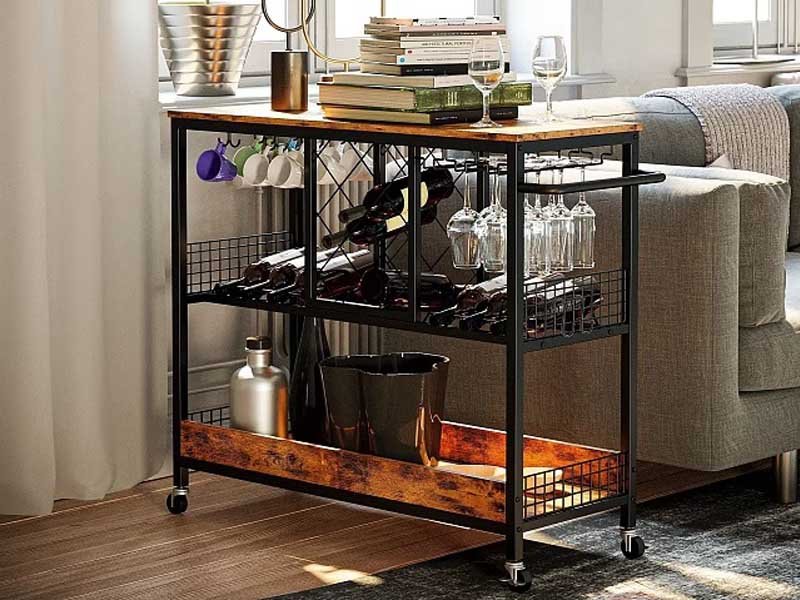When I first considered buying MDF furniture, I was apprehensive about its reputation. Concerns over durability and health were at the forefront of my mind. Could it truly harmonize with my home environment?
MDF furniture isn't inherently bad for your home if used appropriately, matching its material characteristics and adherent to quality standards. With low formaldehyde emissions and careful application, MDF serves as a safe, cost-effective alternative for specific home uses.
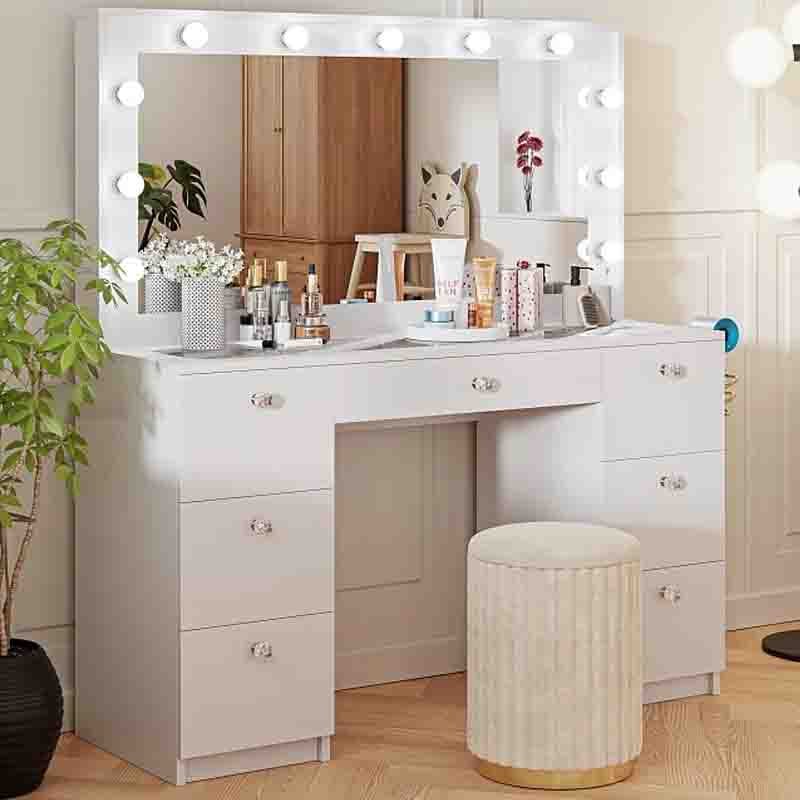
Understanding MDF begins with recognizing its strengths and limitations. While it excels in design versatility and cost-effectiveness, it's unsuited for high-moisture conditions or heavy-load applications. By selecting pieces that align with MDF's attributes, you can enjoy stylish and practical home furnishings without compromising safety or quality.
1. Is MDF Furniture Truly Inferior to Solid Wood and Plywood?
Many doubt MDF furniture’s quality. People hear stories about early sagging, toxins, or cheap looks. Let’s move past the myths and see what MDF really offers—and where it fits best.
MDF furniture may lack the prestige of solid wood, but its engineered properties, safety, and cost-effectiveness make it a viable choice for many uses when design and expectations align.
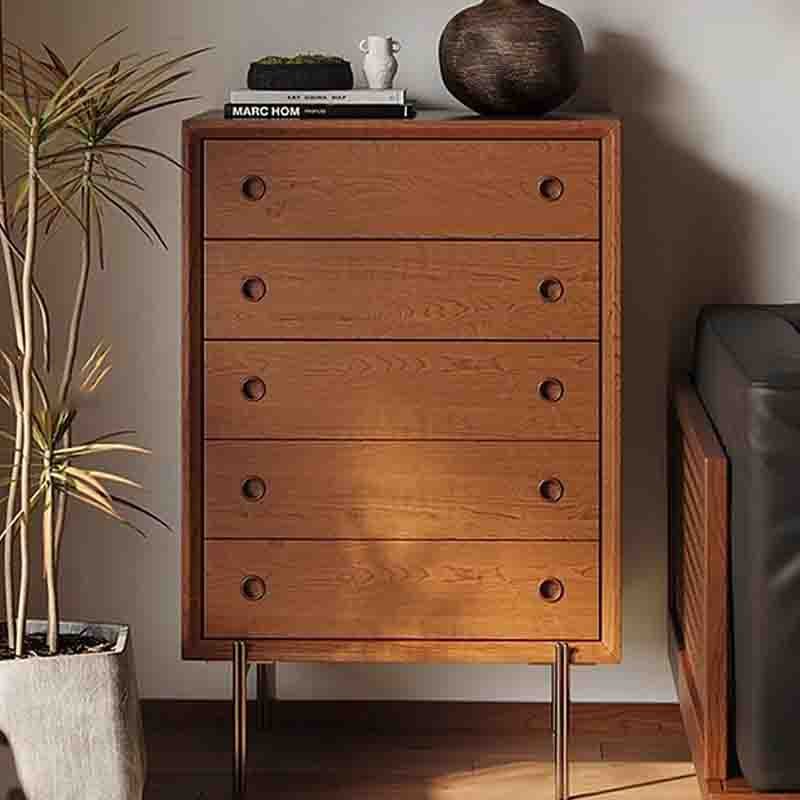
Understanding the MDF Reputation
Many people walk past MDF furniture in stores. I was one of them for years. People believe solid wood or good plywood will always outlast the engineered board1 glued from wood fibers. I remember assembling my first bookshelf from MDF. It felt smooth, finished, and heavy—but I worried it might crumble in a few years. So, why the skepticism around MDF?
MDF stands for Medium Density Fibreboard. Manufacturers create it by breaking down wood into small fibers and bonding them with resins under heat and pressure. The result is a consistent, smooth sheet. MDF is cheaper than solid wood or plywood and can be milled into precise shapes. Yet, concerns about strength, lifespan, chemicals, and value persist.
How Does MDF Actually Perform?
Let’s compare the most important attributes side by side:
| Attribute | MDF | Plywood | Solid Wood |
|---|---|---|---|
| Strength | Moderate, uniform | High (cross layers) | Very high (varies) |
| Durability | Prone to moisture issues | Good, better sealed | Excellent if cared |
| Appearance | Smooth, easy to paint | Grain patterns | Natural beauty |
| Repairability | Hard to repair | Moderate | Easy with skill |
| Cost | Low | Medium | High |
| Workability | Easy to cut, no grain | Needs sharp tools | Needs skill |
| Health Risks | Potential formaldehyde | Some adhesives | Usually safe |
MDF stands out for its uniform surface that takes paint well and doesn’t splinter. There are no knots or grain direction, so I can cut pieces without worrying about warping. Furniture makers love it for doors, shelves, and custom shapes. However, MDF absorbs water quickly, so exposed edges swell unless sealed well.
Plywood uses layers of wood veneer glued at angles. It is tougher and less likely to sag under weight. Solid wood is strongest for load-bearing uses. Unlike MDF, it usually lasts for decades when properly cared for but costs more and is sensitive to humidity.
Is MDF Safe in the Home?
Many people worry about formaldehyde in MDF2. It is true: some older MDF used urea-formaldehyde resins, which release chemicals into the air. Most modern products in regulated markets use lower-emission resins and meet strict safety standards. I always check for “E1” or “CARB-compliant” labels when buying MDF. I never use unsealed MDF where kids or pets might chew or where spills are common.
When Is MDF a Smart Choice?
After years of testing in my own home, I see MDF as the right fit for painted furniture, budget shelving, and decorative panels away from water. I use solid wood for high-impact areas (desks, dining tables) and plywood inside cabinets. Each material shines when matched to the right job.
The fear around MDF furniture usually comes down to mismatched expectations or poor use. I learned to pick MDF for what it does best—clean edges, low price, painted looks. If you understand its limits and proper care, MDF is not inferior. It is a useful, proven solution where solid wood is too costly or unnecessary.
MDF is a cost-effective alternative to solid wood and plywood.True
MDF is generally cheaper than solid wood and plywood, making it a viable option for budget-friendly furniture solutions.
MDF has the same level of durability as solid wood.False
MDF is more prone to moisture issues and does not last as long as solid wood, which is known for its excellent durability when cared for properly.
2. How Do Manufacturing Standards Make MDF Safer for Your Home?
Worried about chemicals in home materials? You are not alone. Formaldehyde and safety standards3 can be confusing. Trusting the right certification offers real peace of mind.
Manufacturing standards like E1, E0, EN 622-5, and CARB Phase 2 limit emissions, especially formaldehyde, in MDF panels. These rules make MDF panels safer for home use and help buyers choose products that meet strict safety requirements.
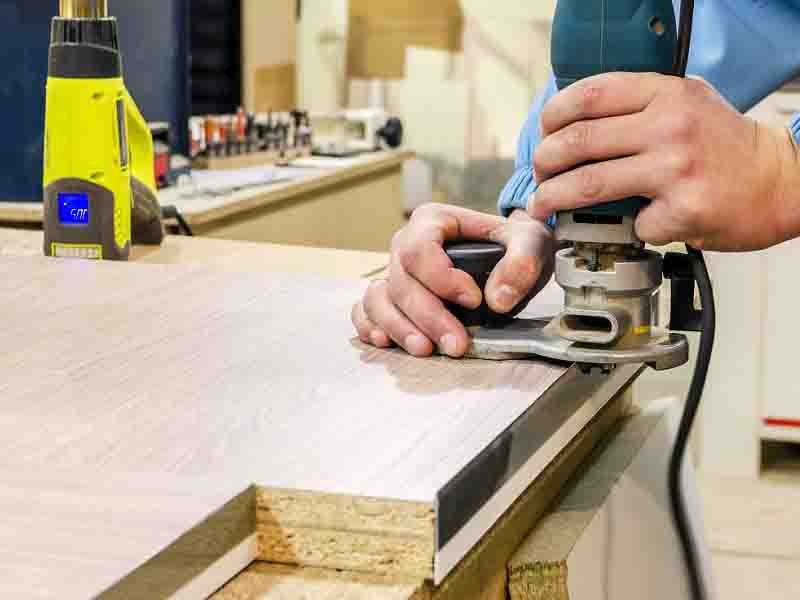
What Is MDF and How Is It Made?
MDF stands for Medium-Density Fiberboard. I have used MDF in projects because it is strong and smooth. MDF is made by breaking down leftover hardwood or softwood into tiny fibers. Manufacturers blend these fibers with wax and resin. The mix is pressed together under heat and pressure. This creates panels with a consistent and smooth surface.
The process uses adhesives that may contain formaldehyde, a chemical that can release into the air. Many people do not realize that formaldehyde can cause health worries if levels are high. Therefore, the way MDF is made and what it contains matters for safety inside homes.
Why Do Standards Matter for MDF Safety?
Not all MDF is made the same way. That is why manufacturing standards exist. Standards like E1, E0, EN 622-5, and CARB Phase 2 set rules about how much formaldehyde can be present in MDF. These rules lower indoor air pollution and reduce health risks for people who spend time in rooms with MDF furniture, cabinets, or panels.
Here is a simple table to compare the main standards:
| Standard | Formaldehyde Limit (mg/L) | Common Use Region |
|---|---|---|
| E1 | ≤ 1.5 | Europe, Asia |
| E0 | ≤ 0.5 | Premium, Global |
| EN 622-5 | Varies | Europe |
| CARB Phase 2 | ≤ 0.05 ppm (parts per million) | California, North America |
When you see labels that say E1 or E0, you know the manufacturer follows tighter limits. If MDF meets CARB Phase 24, it has some of the lowest emissions allowed. This means the likelihood of bad health effects from chemical exposure drops.
How Can You Check MDF Quality at Home?
I always ask for certification before buying MDF products. Many manufacturers now display their compliance clearly in documents or on packaging. If you see EN 622-5, E1, E0, or CARB Phase 2 on a label, the MDF is likely safer for indoor use. Still, it is good to ask for supporting test results or reports. This simple step helps create safer spaces for children and adults alike.
Key Takeaways from Industry Standards
Lower emission MDF protects indoor air. Strict standards keep people safer by setting limits and requiring regular tests. I only choose MDF with trusted certification, and encourage others to do the same for healthy, safer living spaces. Standards are not just technical—they create cleaner air for everyone indoors.
Manufacturing standards like E1 and CARB Phase 2 lower formaldehyde emissions in MDF.True
These standards are designed to limit the amount of formaldehyde emitted from MDF, making it safer for indoor use.
MDF does not contain any adhesives with formaldehyde.False
MDF is made using adhesives that may contain formaldehyde, which can pose health risks if levels are high.
3. When Does MDF Offer the Best Durability in Use?
Many struggle to decide if MDF will last in their projects. Ignoring moisture risks5 leads to early damage. Understanding the limits and strengths of MDF solves this problem.
MDF provides excellent surface integrity and warping resistance in dry, stable settings but is not durable in high humidity or when exposed to water. Careful placement is key to ensuring longevity.
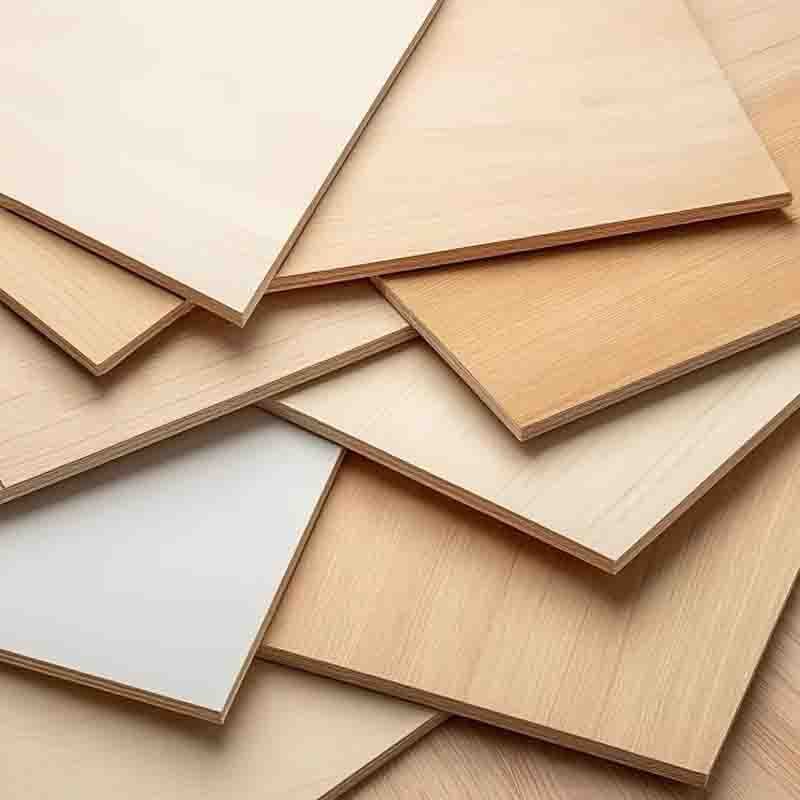
Understanding MDF Durability
MDF, or medium-density fiberboard, interests me because it has a reputation for reliability in the right context. I remember working on a library project where MDF shelving was chosen for its smooth finish and straight lines. That library's climate control made the difference. There was little risk of moisture, so the shelves held up well for many years. This kind of story is common. If the setting is controlled, MDF serves its purpose and lasts.
How MDF Handles Environmental Conditions
MDF resists warping6 and maintains a uniform surface in settings where temperature and humidity do not change much. This makes it better than particleboard for surfaces that need painting or veneering, like wall panels or furniture. I see this often in home interiors, offices, and commercial spaces. However, trouble begins when you put MDF in places like bathrooms, basements, or kitchens without good ventilation.
The core reason: MDF bonds its fibers with resin under high pressure. This process gives it a dense and smooth feel. But the internal bond is only moderate. The material soaks up water at unsealed areas. This leads to swelling, breakdown, and sometimes structural failure. Here is a comparison:
| Feature | MDF | Particleboard | Low-Grade Plywood |
|---|---|---|---|
| Surface uniformity | Excellent | Poor | Fair |
| Warping resistance | High in dry areas | Low | Moderate |
| Water resistance | Poor | Very poor | Moderate |
| Handling mechanical stress | Moderate | Low | High |
| Ideal environment | Dry, stable indoors | Dry, low-stress places | Variable humidity |
Practical Do's and Don'ts for MDF Placement
There are simple rules I follow. Always keep MDF away from water sources and damp air. I seal all visible and hidden edges with paint or sealant. When MDF goes into cabinetry, I choose only dry rooms. For doors and shelving that might get heavy loads or bumps, I ask if plywood or solid wood might be safer.
Common Missteps and Solutions
Many people make the mistake of using MDF for bathroom vanities. I once visited a friend who did this. Within a year, the edges bubbled. The swelling made the surface rough and even loosened the hinges. If water is a regular issue, only materials with high mechanical bond and water resistance7 work.
Conclusion: Knowing Where MDF Excels
The best use for MDF is where weather and moisture do not change much. When the environment is right and the edges are sealed, MDF can last many years with very few problems. Users should weigh this against the risk factors of their intended project. If you match MDF to the correct conditions and use best installation practices, you will see it perform as expected. Otherwise, swelling and warping could ruin the work. This knowledge is what ensures that MDF can live up to its promise.
MDF is highly resistant to warping in dry, stable environments.True
MDF maintains a uniform surface and resists warping effectively when kept in controlled humidity and temperature conditions.
MDF remains durable when exposed to high humidity and water.False
MDF absorbs water in unsealed areas, leading to swelling and structural failure in high humidity or wet conditions.
4. How Does MDF Offer Superior Surface and Decorative Flexibility?
Smooth finishes on furniture are hard to achieve. Natural defects or grain telegraphing make solid wood limiting for intricate modern designs. MDF resolves these challenges with a uniform base.
MDF’s uniform structure creates flawless, smooth surfaces for paint, laminates, or complex detailing. It easily mimics various decorative styles, outshining solid wood’s grain limitations and visible defects, especially for contemporary and modern designs.
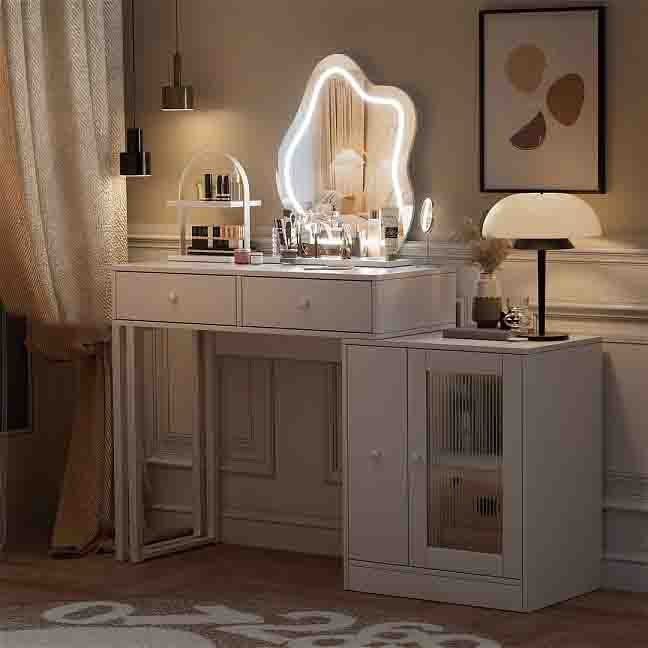
Why Surface Quality in Furniture Materials Matters
Achieving a consistent, high-end finish on furniture is not a simple task. Solid wood, which many see as the gold standard, actually comes with challenges. Natural wood has grain, knots, and color variations. When I first started working with wood, I admired those details. However, reliable bulk furniture manufacturing demands consistent results, especially if you want to paint or apply a synthetic laminate.
With MDF (medium-density fiberboard), I see a stark difference. The material is engineered to have a homogenous structure. There are no knots, and the fibers are compressed evenly. This means, when I prime and paint MDF, the result is glass-like smoothness. No grain shows through. I get the finish that matches my vision every time.
Here is a table comparing MDF and solid wood for surface quality and decorative flexibility:
| Property | MDF Furniture | Solid Wood Furniture |
|---|---|---|
| Grain visibility | None | Visible—can create uneven finish |
| Painted finish | Smooth, flawless | Risk of grain telegraphing |
| Laminates & veneers | Adheres perfectly, no gaps | Can bubble/peel on rough edges |
| CNC and intricate cuts | Clean, precise | Can chip or split |
| Style versatility | High—can mimic any surface | Constrained by wood species |
The Value of MDF in Contemporary and Custom Design
CNC (computer numerical control) machining has changed how we design interiors. Modern designers like to play with shapes, curves, and complex profiles in cabinetry and wall panels. I learned, early on, that MDF’s dense composition holds up during CNC routing. Clean edges mean more accurate detailing. No splintering. This opens the door to consistently producing shapes that would be difficult with most natural woods.
Solid wood also reacts to changes in humidity and temperature. I remember making solid wood cabinet doors in winter. Months later, they warped and cracked as the seasons changed. MDF’s engineered fibers8 resist this. The material stays flat and stable, making it a favorite for commercial interiors and budget-conscious residential projects that cannot afford warped panels.
I have seen MDF painted to appear like steel, soft pastel lacquer, or even high-gloss automotive finishes. With laminates, the possibilities multiply: stone, concrete, woodgrains, or abstract prints—almost any look is possible.
Practical Decorative Applications
Here are some ways MDF’s surface and flexibility stand out:
- Kitchen cabinet doors painted white or navy with no sanding marks
- Wall panels routed with repeating geometric patterns for office lobbies
- Bookshelves covered in colorful, thermally fused laminate for children’s rooms
- High-gloss wardrobe doors that stay crisp and free from warping
The takeaway is simple. If you want creative control over furniture’s surface and flexibility, MDF lets you realize your vision without compromise. Solid wood may have tradition, but for surface consistency and adaptability, MDF stands apart.
MDF provides a uniform structure that achieves smooth surfaces for finishing.True
MDF's engineered composition eliminates natural defects, allowing for flawless finishes without grain visibility.
Solid wood offers superior surface quality compared to MDF.False
Solid wood has natural imperfections like grain and knots, which can lead to inconsistent surfaces, unlike the smooth finish achievable with MDF.
5. How Does MDF Furniture Balance Cost with Practical Use?
Struggling to meet budget limits while needing reliable furniture? Cheap choices seem risky. Yet, smart solutions exist for non-structural needs.
MDF furniture offers a budget-friendly option, providing steady quality for areas that do not bear heavy loads. It meets the needs of cost-conscious buyers without greatly sacrificing appearance, especially when used as cabinet doors, shelves, or bedroom pieces.
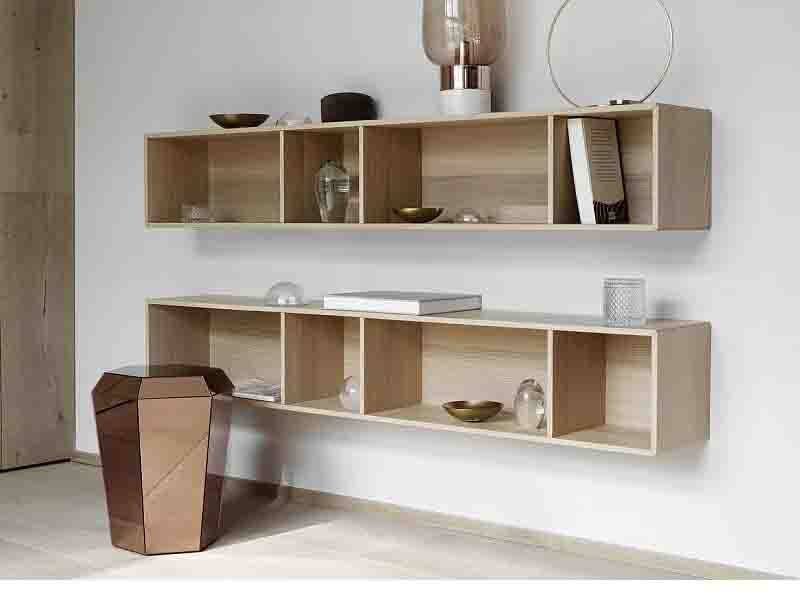
What Makes MDF a Smart Choice for the Budget-Minded?
When I first furnished my home, I had limited funds. I wanted furniture that looked good and lasted for everyday use. Solid wood gave a classic appearance, but the cost was high. I found MDF furniture9 for wardrobes and shelves. The price fit my budget. The look was clean and finished. Yet, I worried about strength.
Many people share this concern. MDF, or Medium Density Fiberboard, is made from wood fibers blended with resin and pressed into solid boards. It is not as strong as plywood or solid wood, but it gives consistent quality, especially for parts that do not support much weight.
Key Areas Where MDF Shines
| Application | MDF Suitability | Notes |
|---|---|---|
| Cabinet doors | Excellent | Holds paint well, smooth surface |
| Shelving | Good (light use) | Avoid overloading, support well |
| Bedroom furniture | Excellent | For dressers, nightstands, headboards |
| Load-bearing frames | Poor | Use plywood or solid wood instead |
I found that my MDF closet shelves10 stayed straight for years, as long as they were not overloaded. They looked just as sharp as pricier options. The smooth surface took paint beautifully. I could match any style I liked.
MDF boards work well in mass-produced furniture11. The price per piece drops when many pieces are made at once. This matters for schools, apartments, or anyone needing to furnish spaces on a tight budget.
Understanding When and Where to Use MDF
Yet, there are clear limits. MDF cannot safely hold up heavy objects over a long time. It also does not handle moisture well, so I kept it away from my kitchen sink or bathroom. But for shelves and cabinet doors in dry areas, it performs. The surface is always flat, with no knots or splitting.
In summary, MDF lets you manage costs and still get dependable, good-looking furniture for parts that do not carry much weight. Knowing its strengths and limits allows for money well spent and furniture that lasts. When saving money is key, and looks still matter, MDF is a practical answer.
MDF furniture is a cost-effective solution for non-load-bearing applications.True
MDF is budget-friendly and suitable for areas that do not bear heavy loads, making it an economical choice for many furniture needs.
MDF furniture is stronger than solid wood.False
MDF is not as strong as solid wood or plywood, and should not be used for heavy-duty applications.
6. Are Modern MDF Furniture Pieces Safe for Indoor Air Quality?
Many people fear chemicals in furniture. Older MDF released formaldehyde, causing concern. Today’s choices can be safe. Pick low-emission panels and use proper sealing to control indoor air risks.
Modern MDF can be safe when made with E0-grade panels, proper sealing, and certified materials. These limit formaldehyde emissions to negligible levels, making MDF suitable for homes, offices, and children’s rooms. Verify certifications and inspect finishing to ensure safety.
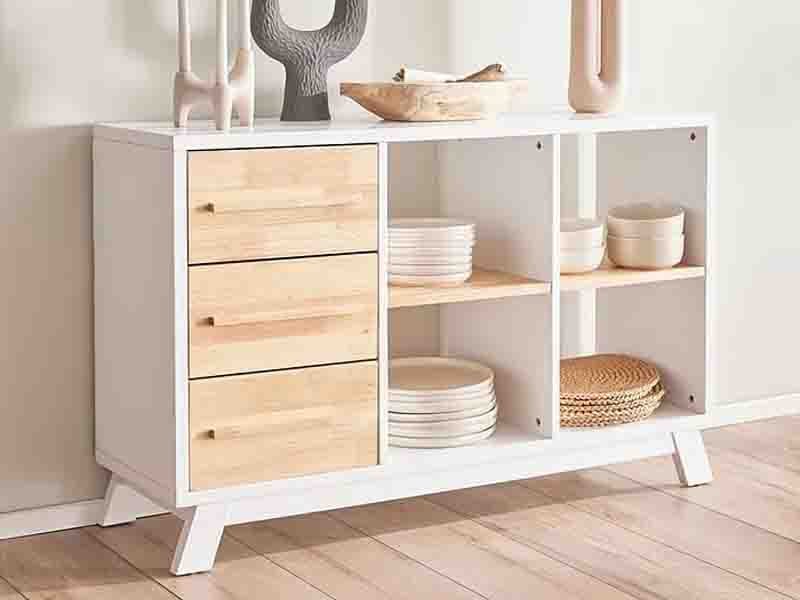
Understanding MDF and Formaldehyde Emissions
Medium Density Fiberboard (MDF) is a popular material for making furniture due to its affordability and versatility. In the past, the main issue with MDF was its use of adhesives that emitted formaldehyde gas12. Many people were aware of the dangers. Formaldehyde can irritate the eyes, nose, and throat. Prolonged exposure might even increase certain health risks.
How Modern MDF Addresses Air Quality Issues
Advancements in manufacturing have now greatly improved MDF’s safety profile. Top manufacturers use E0-grade panels13. This means the panel emits less than 0.05 parts per million (ppm) of formaldehyde. At this level, emissions pose minimal risk. For most people, this amount is insignificant in typical indoor air.
To give you a clear sense of the improvements, see the table below:
| MDF Type | Formaldehyde Emission Level | Typical Use |
|---|---|---|
| Standard | Up to 1.5 ppm | General furniture |
| E1 Grade | ≤0.1 ppm | Schools, homes |
| E0 Grade | <0.05 ppm | Children’s rooms, sensitive environments |
The Role of Finishing and Edge Sealing
I have remodeled rooms using both standard and E0-grade MDF. I noticed a big difference. Panels that were finished on all sides and had sealed edges did not emit any noticeable smell. These steps trap any remaining chemicals inside the board, preventing them from entering the room air.
Third-party certifications help too. The labels confirm that the MDF meets strict standards. I always recommend checking for recognized marks before buying.
Steps for Buyers: Ensuring Safe MDF in the Home
- Always check for “E0” or “CARB Phase 2” certification.
- Inspect edges to ensure they are painted, laminated, or well-sealed.
- Ask about finishes. Water-based or low-VOC finishes14 add another layer of protection.
- Ventilate new rooms for a week after installing new MDF furniture, even with low-emission panels.
- Choose MDF only from companies that can show independent test results.
Who Should Be Most Careful?
Children are more sensitive to chemicals than adults. Offices, bedrooms, and nurseries should always use the lowest-emission panels. People with allergies or respiratory issues benefit most from certified, well-sealed MDF.
The Bottom Line
Modern MDF, when chosen with care, can be as safe as solid wood. Carefully manufactured boards and proper finishing offer a practical, affordable, and low-risk option for indoor spaces. I recommend researching brands and verifying certifications to ensure your indoor air stays clean and safe.
Modern MDF can be safe when made with E0-grade panels and proper sealing.True
E0-grade panels emit less than 0.05 ppm of formaldehyde, making them suitable for indoor use and minimizing health risks.
All MDF panels release high levels of formaldehyde regardless of grade.False
Not all MDF panels are the same; E0-grade panels are designed to emit very low levels of formaldehyde, thus enhancing indoor air quality.
7. Is MDF Really a Sustainable Choice for Eco-Conscious Projects?
Wasteful production harms the planet. Choosing the wrong material can undermine sustainable goals. Exploring greener options like MDF provides practical paths to responsible construction.
MDF can be a sustainable material when produced responsibly, as it uses wood residues, sometimes recycled fibers, and may meet strict certifications. Select certified MDF to minimize environmental impact.
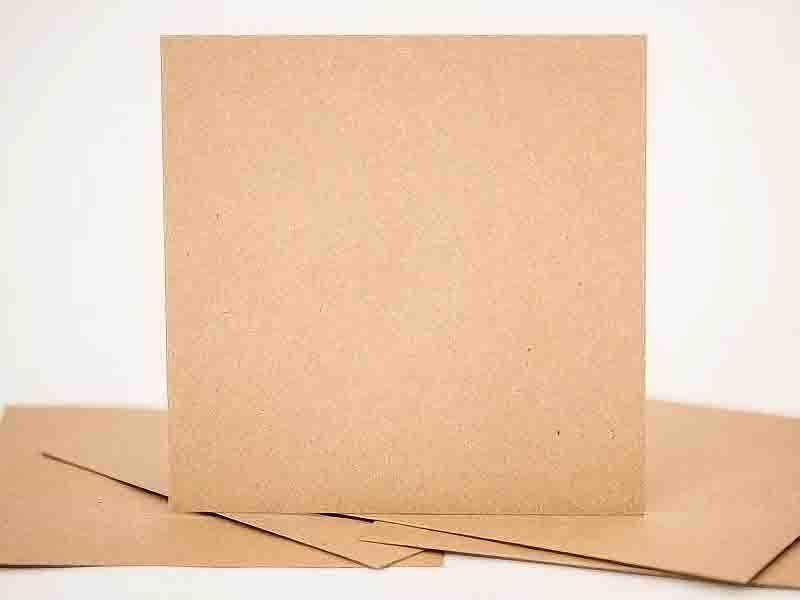
Understanding MDF’s Environmental Impact
I often ask myself how the properties and manufacturing of materials affect our planet. MDF, or medium-density fiberboard, is a good candidate for this kind of analysis. It stands out mainly due to the way it is made. Rather than demanding fresh timber, MDF takes what others might discard as waste—wood chips, shreds, and sawdust—and compresses them into durable panels. This process gives these leftovers new life and reduces raw material demand.
This use of residual wood means fewer living trees fall for every panel produced. Sometimes, manufacturers go even further. There are panels on the market containing recycled fibers, which supports a circular resource economy. If you prioritize nature’s well-being like I do, such panels matter a lot.
Lifecycle assessment is the next important factor. When I compare solid wood and MDF, I see big differences. Solid wood extraction and shaping can demand more energy and create more waste. MDF, by using leftovers and optimized production lines, often rates as less resource-intensive over its life. This includes manufacturing, transport, use, and eventual disposal or recycling.
Certifications and Responsible Choices
Not all MDF is equal, though. I learned to look for certifications that trace the wood's origin and verify sustainability standards. The Forest Stewardship Council (FSC)15 and Programme for the Endorsement of Forest Certification (PEFC)16 are the most recognized. Panels with these labels give me confidence. They assure that forests are managed in ways that conserve biodiversity and benefit communities.
Here’s a table I use to help clarify the environmental credentials:
| Feature | Conventional MDF | Certified Sustainable MDF (FSC/PEFC) |
|---|---|---|
| Source Material | Mixed/Unknown origins | Verified responsible sources |
| Use of Recycled Fiber | Infrequent | More frequent |
| Lifecycle Impact | Moderate | Lower |
| Traceability | Low | High |
| Consumer Assurance | Unreliable | Reliable |
Key Takeaways for Project Decisions
When I start a project, I think about its total impact. My advice is direct: choose MDF panels that come from responsible manufacturers and carry FSC or PEFC certification17. Always ask for documentation regarding recycled content18 and environmental audits. If more decision-makers shift to this criteria, suppliers will prioritize green production. If you care about resource efficiency and environmental protection, certified MDF is a strong choice for your eco-conscious projects. Even small choices can add up to big outcomes for the environment.
MDF can be a sustainable material when produced responsibly.True
MDF made from wood residues and recycled fibers can minimize environmental impact when certified by organizations like FSC and PEFC.
Certified MDF does not reduce the demand for fresh timber.False
Certified MDF production relies on recycled materials and residues, thereby decreasing the demand for fresh timber.
8. Can MDF Furniture Stand the Test of Time and Repair?
Many want furniture that lasts. MDF looks good, but how does it handle damage and time? The answer is key before buying.
MDF furniture cannot be easily repaired or refinished. Its lifespan ranges from 5 to 15 years with normal use. Water and deep scratches can cause lasting damage. MDF is suited to areas needing regular updates or replacements.
What Happens When MDF Gets Damaged?
I once bought a modern MDF desk for my home office. It was cheaper than solid wood, so I expected minor scuffs. A few months later, I spilled water. The liquid seeped into an edge. Swelling started fast. Unlike solid wood, MDF bubbled and softened where wet. Sanding did not help. Repairs were not possible for that area.
This story is common. MDF, or medium-density fiberboard, is a balance between cost and appearance. It uses wood fibers mixed with resin. Manufacturing presses the mixture into flat panels. MDF is smooth and uniform. It holds paint well and cuts into clean shapes. Yet, this construction limits repair options19.
Solid wood can take many rounds of sanding and refinishing. Deep scratches vanish after sanding. Water stains can be removed with care. MDF, in contrast, hides trouble inside. If you sand past the surface, you expose fuzzy fibers below. Paint and veneer may not stick again.
Tables, shelving, and cabinets made from MDF look smart when new. If you compare repair potential, MDF falls behind other materials. The table below highlights the differences:
| Material | Can Refinish? | Repairable? | Ideal Lifespan | Water Tolerance |
|---|---|---|---|---|
| Solid Wood | Yes | Yes | 30+ years | Medium |
| MDF | No | Limited | 5-15 years | Low |
Why Does Longevity Matter for Furniture?
Longevity is not just about saving money. It also means fewer changes and less waste. Some want furniture that lasts for generations. MDF cannot deliver that. Its value is in other areas.
Renters or students may want flexible pieces. Businesses may refit offices every few years. In both cases, budget and style change. MDF meets these needs. You replace damaged items, not repair them.
Still, there are risks. Moisture is a constant threat. Kitchens and bathrooms are harsh places for MDF. Even high humidity can lead to swelling and joint failure. Heat can break glue bonds over time.
MDF’s shorter lifespan20 and limited repair options21 suggest careful placement. Choose it for shelves, desks, or storage where spills are unlikely. If you move often or enjoy a new look every few years, MDF can work well.
Making Informed Choices
In summary, MDF furniture is not designed for a lifetime. Repairs are hard, and water is its enemy. I think about how my old desk lasted only a few years. Next time, I will match furniture material to my environment and needs. By knowing these limits, you can buy with open eyes.
MDF furniture typically lasts between 5 to 15 years with normal use.True
The lifespan of MDF furniture is specified as ranging from 5 to 15 years in the content.
MDF furniture can be easily repaired and refinished like solid wood.False
MDF furniture cannot be readily repaired or refinished due to its construction, which limits repair options.
9. When Does MDF Outperform Other Materials in Home Projects?
Many struggle to pick the right material for furniture and walls. Wrong choices lead to peeling paint and wobbly shelves. Choosing correctly prevents costly replacements.
MDF is best for painted cabinets, detailed moldings, and low-cost furniture, as long as you use quality edge sealing and the right hardware. This ensures long-term durability and great looks.
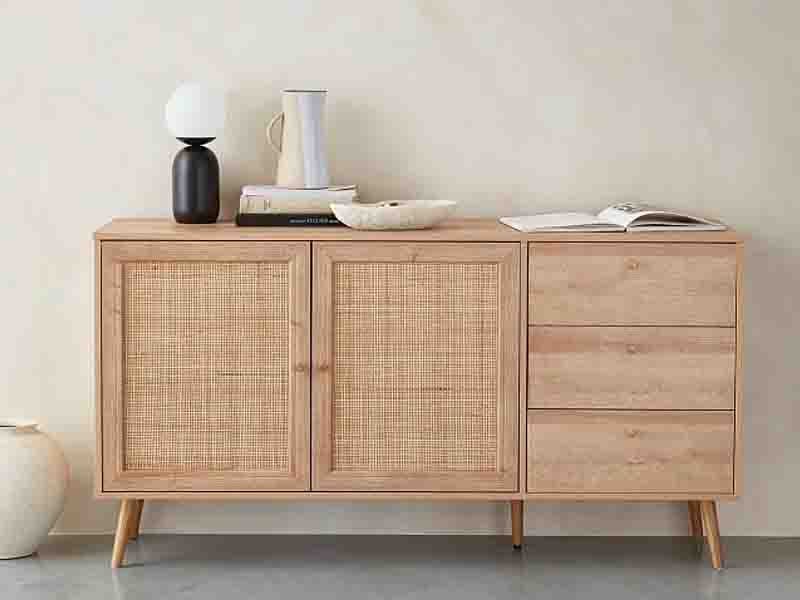
Why Do Professionals Rely on MDF for Certain Applications?
I have seen MDF used with great outcomes in painted kitchen cabinets and custom wall panels. MDF, or Medium Density Fiberboard, is a man-made wood product made by breaking down wood fibers and binding them with resin. Its consistent density and smooth finish help it excel in several settings.
Professionals prefer MDF for cabinetry, especially when a painted or laminate finish is required. Solid woods can show grain through paint, but MDF gives a flawless, uniform surface. Its smooth face lets paints and veneers stick evenly. This avoids patchy color or delamination issues.
For decorative wall moldings22, rosettes, or baseboards, MDF is easy to shape into intricate designs using routers or saws. I once worked on a home office remodel. The elegant, sharply-defined crown molding was made from MDF. It looked crisp after painting and cost less than real wood.
Budget furniture—like shelving units or wardrobes—also uses MDF. Its low cost makes it perfect for items in climate-controlled spaces. Bedrooms and offices with steady humidity do not affect MDF’s structure much, so it resists warping as long as it stays dry.
However, key details matter. Edges on MDF can absorb moisture or chip if left exposed. High-quality edge sealing prevents swelling and paint peeling. When assembling pieces, hardware choice is vital. Fasteners like barrel nuts and sleeve anchors distribute load over a wider area. This prevents screws from pulling out or corners from cracking.
Here is how application, finish needs, and hardware choices compare for MDF’s top uses:
| Application | Finish Type | Edge Sealing | Best Hardware |
|---|---|---|---|
| Painted Cabinetry | Paint or Laminate | Essential | Barrel Nuts, Sleeve Anchors |
| Decorative Moldings | Paint | Essential | Small Nails, Wood Glue |
| Budget Furniture | Paint or Laminate | Recommended | Knock-down Fittings |
Performance Caveats and Practical Tips
Every project with MDF comes with limits. I warn friends not to use it where it may get wet—think bathrooms or kitchen sink bases. Water damages the fiberboard structure. For shelves holding heavy weights, I suggest using fasteners that grip deeply into the MDF, not just surface screws.
Climate control matters too. When MDF moves into unheated garages, it swells or sags. But indoors, its stability and low price make it a go-to. When handled with care, edge sealed23, and built with sturdy connections, MDF outperforms plywood or particleboard in many interior finish projects.
MDF is preferred for painted cabinetry due to its smooth finish and consistent density.True
MDF provides a flawless, uniform surface that enhances the appearance of painted finishes, unlike solid wood which can show grain.
MDF can be used in areas with high moisture, such as bathrooms, without risk.False
MDF is not suitable for high moisture areas as it can absorb water, damaging its structure.
10. Where Should You Never Use MDF in Your Home Projects?
Have you ever seen furniture swell, warp, or collapse? MDF often causes these headaches. Many people misuse it. Let’s uncover when you must choose another material.
MDF should never be used in high-moisture areas, outdoors, or for supporting heavy loads. Its water sensitivity and low strength make it risky for bathrooms, outdoor furniture, and structural parts like bed frames or bookshelves.
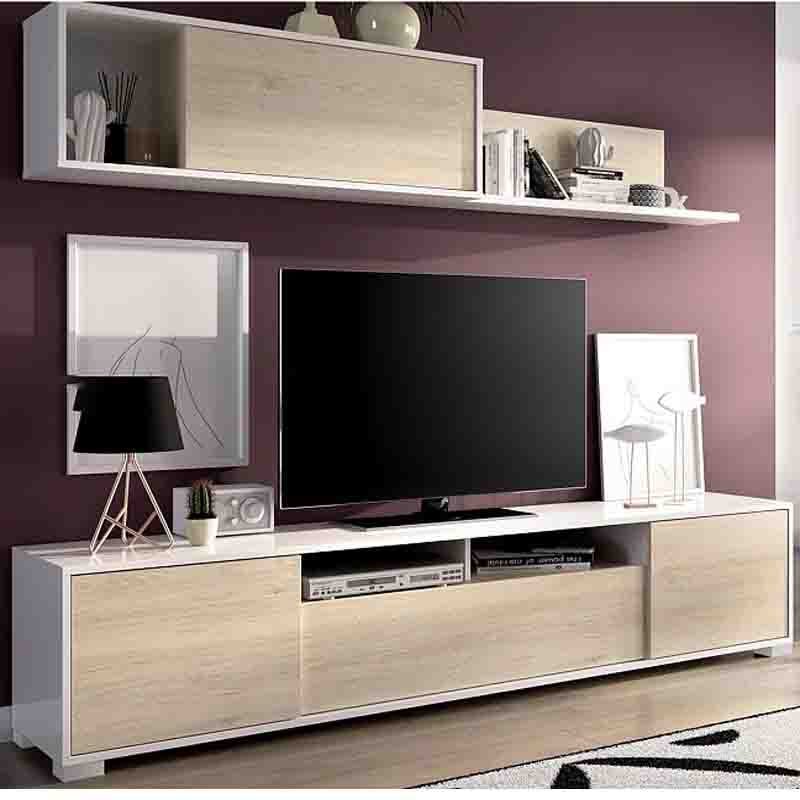
Understanding Why MDF Has Limits
Some people trust MDF for any project because it is smooth and affordable. But I have learned through mistakes. I once built a bookshelf from MDF, hoping it would last. It bent after I placed a few heavy books. I saw first-hand that MDF could not support much weight and did not recover from minor dampness.
Let’s look at where MDF fails and why choosinMDF load-bearingg the right material is so important.
1. Wet and Humid Environments: A Big No
MDF cannot handle water. If you use it in a bathroom or a kitchen, especially without perfect sealing, it will absorb water fast. The board will swell, warp, and break apart. Even steam from showers or cooking can damage it over time. Water seeps into the fibers. The glue holding them together weakens. I saw a cabinet door in a kitchen sag and bubble after only a few months because it was made from MDF.
Compare how different materials perform in wet areas:
| Area | MDF | Solid Wood | Plywood |
|---|---|---|---|
| Bathroom | Not Suitable | Sometimes | Good with seal |
| Kitchen Sink | Not Suitable | Good | Good |
| Outdoor Space | Never Use | Best Option | Best Option |
2. Outdoor Furniture: Risk of Rapid Failure
Outdoor furniture faces rain, dew, and big temperature changes. These destroy MDF quickly. The board sucks up moisture from all sides. This causes cracks and delamination, even if you paint it. I learned this lesson when an outdoor table I made became unusable after one season.
3. Load-Bearing Parts: Not Strong Enough
People sometimes use MDF for beds or large shelves. This is risky. MDF is not as strong as solid wood or high-grade plywood. Long spans sag. Joints pull apart. The board can snap or crumble under weight. In my experience, heavy bookcases or bed frames made from MDF need frequent repairs or collapse long before their time.
4. When Should You Avoid MDF?
Summing up, always avoid MDF:
- In any place that gets wet or steamy.
- For outdoor use.
- Where you expect strong support—like beds, benches, or big shelves.
MDF is good for smooth cabinet doors or light-duty furniture away from moisture. For everything else, solid wood or good plywood will give you much better long-term results.
Knowing when not to use MDF saves time, money, and frustration. Always match the material to the job. This choice makes all the difference in how your projects last.
MDF should never be used in high-moisture areas such as bathrooms.True
MDF absorbs water quickly, leading to swelling and warping, making it unsuitable for high-moisture environments.
MDF is stronger than solid wood and can support heavy loads without issue.False
MDF is not as strong as solid wood and can sag or fail under heavy weight, making it risky for load-bearing applications.
11. Does MDF Furniture Truly Stand the Test of Time?
Cheap furniture often turns out costly when it fails to last. Discovering which material provides true value can save frustration and money.
MDF furniture serves well in the short- to medium-term, but it cannot rival solid wood or high-grade plywood for lifetime durability and repairability. For heirloom-quality or investment pieces, solid wood remains the preferred choice.
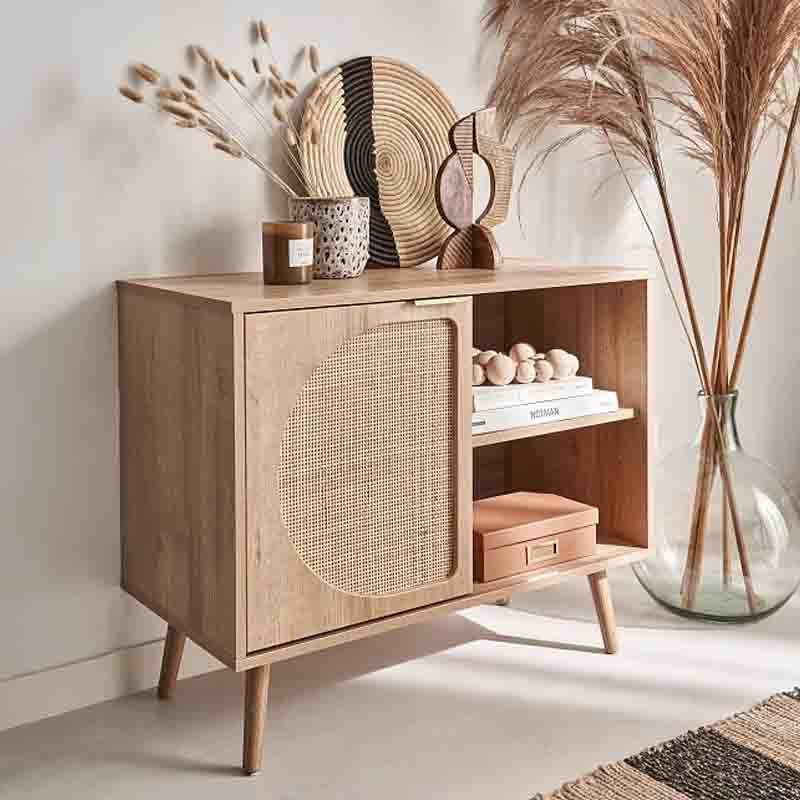
Comparing Durability: MDF, Solid Wood, and Premium Plywood
When I shopped for my first bookshelf, the lower price of MDF caught my eye. I bought one. Within a few years, corners chipped, screws loosened, and the finish faded. Later, I invested in a solid wood coffee table. It aged beautifully. Scratches sanded out, and joints stayed tight. This was my introduction to the real differences between these materials.
Understanding Material Lifespan
Each material behaves differently with time and use. MDF consists of wood fibers bonded with resins. This structure provides a smooth surface. However, it is vulnerable to moisture, swelling, and cannot hold screws as tightly after repeated assembly or repairs. Solid wood, such as oak, maple, or walnut, consists of actual timber. It resists wear, can be repaired easily, and often looks better as it ages. Premium plywood24 consists of several layers of real wood, glued with grains running in alternating directions. This gives strength near that of solid wood, but usually at a lower cost.
Repair and Aging
Solid wood offers unique repair options. I have removed water stains from my table using simple sanding and refinishing. MDF, by contrast, tends to crumble around the damaged area. Repairs are often obvious or not possible. With solid wood, scratches and dents can be fixed with wood fillers, sanding, or finishing. Plywood can also be repaired, though edges may need extra care to avoid splitting.
Cost vs. Value Over Time
A table showing investment over a decade:
| Material | Initial Cost | Typical Lifespan | Repairability | Long-Term Value |
|---|---|---|---|---|
| MDF | Low | 3–7 years | Low | Lower |
| Plywood | Moderate | 10–20 years | Medium | Mid |
| Solid Wood | High | 30+ years | High | Highest |
I noticed that while MDF allowed me to furnish a room quickly, it never offered the peace of mind that solid wood did. Friends who purchased vintage solid wood or premium plywood pieces resold them years later, often for more than they paid. MDF, in contrast, almost always ended up on the curb.
Choosing for Longevity or Immediate Needs
For those who move frequently or need affordable solutions, MDF can make sense. If you want furniture that improves with age and becomes a part of your family or investment, solid wood will nearly always be worth it. The cost up front is higher, but its ability to recover from damage pays off over decades. If you seek a balance, premium plywood offers strength and some repair options without the highest price.
Personally, I now check wood types before buying. My long-term happiness with a solid piece far outweighs the higher upfront expense. The feeling of owning something that lasts—something I can refresh or restore—brings satisfaction every time it gets used. This is the core reason solid wood remains unbeatable for lifetime value.
MDF furniture typically lasts between 3 to 7 years.True
MDF has a shorter lifespan compared to solid wood, as indicated in the material lifespan comparison provided in the content.
MDF furniture can be repaired easily and lasts a lifetime.False
MDF is difficult to repair and has a much shorter lifespan than solid wood, making it unsuitable for long-term use.
12. Is MDF Really Safe and Smart for Home Furniture?
Many people worry about MDF furniture quality. Misinformation causes hesitation when shopping for home items. Finding clarity helps shoppers make smart, safe, and durable choices.
MDF furniture is safe and practical for homes when purchased from trusted sources, installed correctly, and maintained well. Buyers just need to consider certifications, usage location, sealing, and care for long-lasting performance.
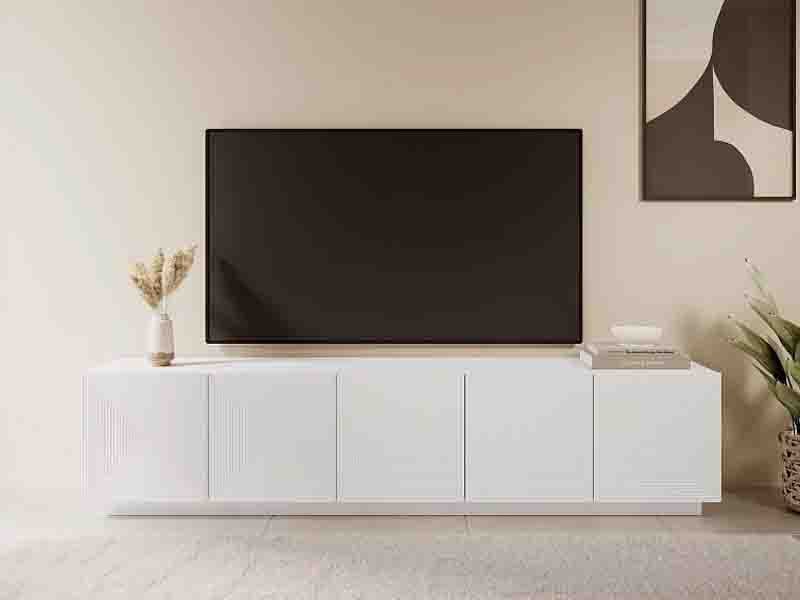
What is MDF and Why is There Debate?
MDF stands for medium-density fiberboard. Manufacturers make it by breaking wood into fibers and pressing them together with resin and heat. People use MDF in a vast range of furniture, from cabinets to bookshelves. However, debates exist. Many people worry about chemicals, durability, and moisture damage25.
I bought an MDF bookshelf for my apartment. I remember hesitating. My friend said MDF warps and breaks fast. I researched more. I wanted to avoid choosing the wrong thing for my home.
The Key Factors: Strengths and Weaknesses
Not all MDF is the same. Quality depends on the manufacturer, resins used, and how well the surfaces are sealed. Here’s what to watch for:
| Factor | Why It Matters | What To Look For |
|---|---|---|
| Third-party certifications | Shows safe, tested material | Labels for CARB, EPA TSCA Title VI, or E1/E0 grades |
| Intended use environment | Moisture or heat can affect MDF | Dry, stable rooms (not bathrooms or exteriors) |
| Proper Sealing | Prevents swelling and damage | Sealed edges, lacquer or paint coatings |
| Maintenance | Extends life; keeps MDF looking new | Regular cleaning and careful use |
If MDF is certified (I look for an E1 or TSCA Title VI sticker26), I feel more at ease. I also avoid putting my MDF furniture in damp corners or next to radiators. My bookshelf still looks good years later.
Safe, Economical, and Stylish: The Final Word
Is MDF a bad choice? Only if misused or poorly made. Designers choose MDF because it is affordable, smooth, and easy to finish in many looks. For homeowners, it offers cost savings and design freedom. Safety is mostly about mindful selection and proper care27.
I encourage buyers to check seals and certifications before purchase. A quick wipe keeps surfaces looking new. Properly sealed MDF won’t off-gas harmful chemicals or quickly deform. This makes it suitable for bedrooms, offices, and living spaces.
In the end, MDF furniture is a smart home option. Pay attention to how and where you use it. Check for trusted quality marks28. Maintain it well. With these steps, MDF combines safety, savings, and style for a modern home.
MDF furniture is considered safe when it is purchased from trusted sources and properly maintained.True
MDF furniture's safety relies on certification, proper sealing, and maintenance, as stated in the content.
All MDF furniture is inherently toxic, regardless of manufacturer or care.False
While some may worry about chemicals in MDF, properly manufactured and sealed MDF can be safe for use in homes, countering the claim of inherent toxicity.
Conclusion
MDF furniture can be a safe, cost-effective choice if used within its limits, ensuring proper sealing and adherence to quality standards for optimal performance and longevity.
-
Discover the differences between engineered board and solid wood to make better decisions for your furniture needs. ↩
-
Learn about the safety of MDF regarding formaldehyde emissions and how to choose safer options for your home. ↩
-
Learning about safety standards for MDF can help you choose safer products for your home, ensuring better indoor air quality. ↩
-
Understanding CARB Phase 2 helps you choose safer MDF products, ensuring better indoor air quality and health. ↩
-
Learn about the risks of moisture on MDF to make informed decisions for your projects and avoid early damage. ↩
-
Discover the properties that allow MDF to resist warping, ensuring it remains a reliable choice for your furniture and interiors. ↩
-
Learn about the importance of water resistance in MDF to prevent issues like swelling and warping, ensuring your projects last longer. ↩
-
Discover the advantages of MDF’s engineered fibers, which provide stability and versatility in furniture applications, making it a preferred choice. ↩
-
Explore the advantages of MDF furniture, including cost-effectiveness and design versatility, to see if it's the right choice for your home. ↩
-
Learn tips on maintaining MDF closet shelves to ensure they remain straight and visually appealing over time. ↩
-
Discover the benefits of mass-produced furniture, including affordability and accessibility for various needs. ↩
-
Discover the health implications of formaldehyde gas exposure and why it's crucial to choose low-emission materials for your home. ↩
-
Learn about E0-grade panels to see how they contribute to safer indoor air quality and modern furniture design. ↩
-
Discover the benefits of low-VOC finishes for safer indoor air quality and healthier living spaces. ↩
-
The FSC plays a vital role in promoting sustainable forestry practices. Discover how it impacts our environment and communities. ↩
-
PEFC certification ensures responsible forest management. Learn how it contributes to sustainability and biodiversity conservation. ↩
-
Learn about FSC and PEFC certifications to ensure your materials are sourced responsibly, supporting sustainable forestry practices. ↩
-
Discover how using materials with recycled content can enhance sustainability in your projects and reduce environmental impact. ↩
-
Learning about repair options for MDF can save you time and money when dealing with damage. ↩
-
Exploring the reasons behind MDF's shorter lifespan can guide you in choosing more durable furniture options. ↩
-
Knowing the repair options for MDF can help you maintain your furniture better and extend its usability. ↩
-
Discover the techniques and materials used in creating stunning decorative wall moldings to enhance your interior design. ↩
-
Learning about edge sealing can significantly improve your MDF projects by preventing damage and extending the material's life. ↩
-
Learn about the benefits of premium plywood, including its strength and cost-effectiveness, to see if it's the right choice for you. ↩
-
Learn about the potential risks associated with MDF, including health and environmental impacts, to make informed decisions. ↩
-
Understanding these certifications can help you make informed choices about safe MDF products. ↩
-
Learning proper care techniques can extend the life of your MDF furniture and keep it looking new. ↩
-
Identifying trusted quality marks ensures you choose safe and durable MDF products for your home. ↩
